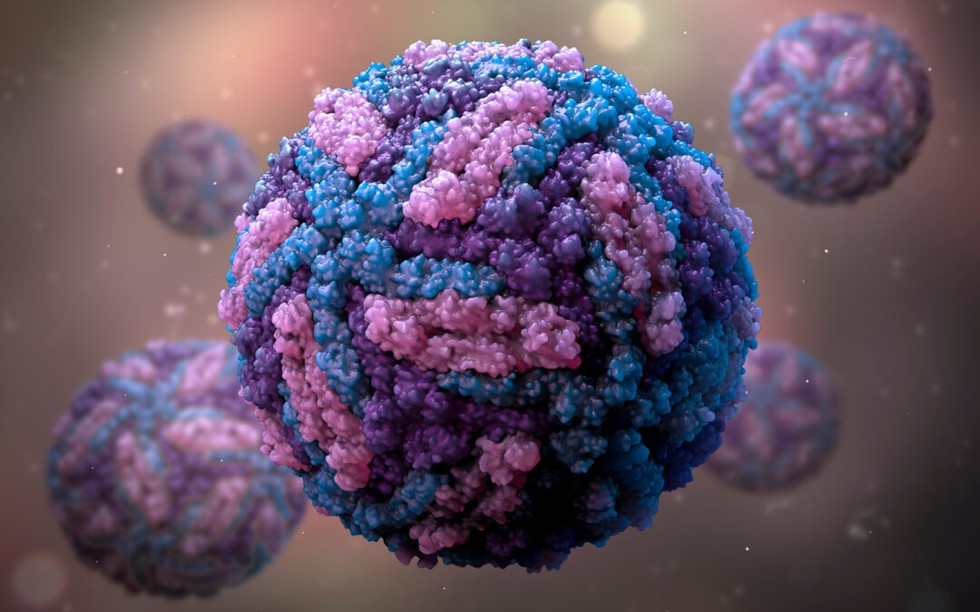Viruses belonging to the Flaviviridae family, such as Japanese encephalitis virus (JEV), dengue virus (DENV), Zika virus (ZIKV), West Nile virus (WNV), and tick-borne encephalitis virus, are significant arthropod-borne pathogens. These viruses are responsible for causing severe diseases, including fatal neurological conditions like Guillain–Barré syndrome, microcephaly, and dengue fever.
Global Threat of Flaviviridae Viruses
The global risk associated with these virus-borne diseases is rising. For instance, dengue virus (DENV) alone is responsible for approximately 390 million infections and 100 million symptomatic cases each year, while Japanese encephalitis virus (JEV) accounts for around 70,000 cases annually. Despite the significant impact of these viruses, effective treatment strategies are still lacking, underscoring the urgent need for vaccines and therapeutics.
Recent Advances in Flaviviridae Virus Research
Historically, Flaviviridae viruses were believed to complete their life cycle entirely within the cytoplasm of the host cell. However, recent studies have demonstrated that core proteins and NS5 are translocated to the nucleus, which is crucial for viral replication.
Discovery of Importin-7 (IPO7) as a Key Protein in Flaviviridae Replication
A groundbreaking study published in PLoS Pathogens has identified a protein named importin-7 (IPO7) as a carrier that transports flavivirus core protein through the nuclear membrane and into the nucleus. This discovery was made by a research team led by Professor Toru Okamoto from the Department of Microbiology at Juntendo University, including Yumi Itoh from Juntendo University and Yoichi Miyamoto from the National Institutes of Biomedical Innovation, Health and Nutrition.
Methodology of the Study
The research team utilized an assay to analyze the transport of proteins to the cell nucleus. They further validated their findings by using cells in which the gene responsible for producing IPO7 was deleted through CRISPR/Cas9 technology. According to Prof. Okamoto, the study revealed that IPO7 serves as a nuclear carrier for Flaviviridae core proteins, allowing them to be transported into the nucleus. When IPO7 was deleted, the core proteins were unable to enter the nucleus.
Impact of IPO7 on Viral Particle Production
To assess how the absence of IPO7 affected the production of viral particles, the researchers infected two types of cells with flavivirus—wild-type cells with an intact IPO7 gene and IPO7-deficient cells lacking this protein. Interestingly, while both cell types exhibited similar levels of viral load, the IPO7-deficient cells produced significantly fewer viral particles. This finding suggests that IPO7 plays a crucial role in the efficient production of viral particles, particularly during the later stages of viral particle assembly and release.
Implications of the Study
The study’s findings indicate that blocking the molecular transport mechanism facilitated by IPO7 after infection by Flaviviridae viruses may help reduce subsequent viral replication, thereby mitigating the health impact of the diseases caused by these viruses.
Multiple-Choice Questions (MCQs):
1. Which family of viruses includes Japanese encephalitis virus (JEV) and dengue virus (DENV)?
a) Orthomyxoviridae
b) Flaviviridae
c) Coronaviridae
d) Herpesviridae
Answer: b) Flaviviridae
2. Approximately how many symptomatic dengue cases are reported annually worldwide?
a) 70,000
b) 1 million
c) 100 million
d) 390 million
Answer: c) 100 million
3. What was traditionally believed about the life cycle of Flaviviridae viruses?
a) It occurs in the host’s mitochondria.
b) It occurs entirely in the cytoplasm.
c) It occurs entirely in the nucleus.
d) It does not involve any cellular organelles.
Answer: b) It occurs entirely in the cytoplasm.
4. What protein has been identified as a carrier for flavivirus core proteins into the nucleus?
a) Actin
b) Tubulin
c) Importin-7 (IPO7)
d) Myosin
Answer: c) Importin-7 (IPO7)
5. What was the impact of deleting the IPO7 gene on viral particle production?
a) Increased viral particle production
b) No effect on viral particle production
c) Decreased viral particle production
d) Complete inhibition of viral replication
Answer: c) Decreased viral particle production
